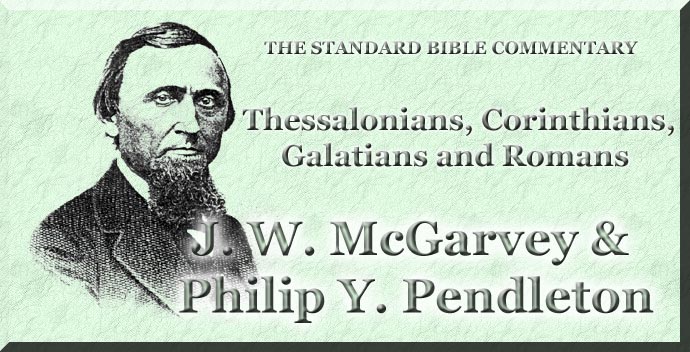
A Commentary on Thessalonians, Corinthians, Galatians and Romans
By J. W. McGarvey and Philip Y. Pendleton
Numbers within [ ] indicates original page numbers
Table of Contents
Title Page
Introduction
Table of
Contents
1 Thessalonians
Introduction
Part
First
Part
Second
2 Thessalonians
Introduction
Part
First
1 Corinthians
Introduction
Part
First
Part
Second
2 Corinthians
Introduction
Part
First
Part
Second
Part
Third
Galatians
Introduction
Part
First
Part
Second
Part
Third
Romans
Introduction
Part
First
Subdivision A
Subdivision B
Subdivision C
Subdivision D
Subdivision E
Part
Second
Subdivision A
Subdivision B
Part
Third
Part
Fourth
-
Site Navigation
 Home
Home What's New
What's New Bible
Bible Photos
Photos Hiking
Hiking E-Books
E-Books Genealogy
Genealogy Profile
Free Plug-ins You May Need
Profile
Free Plug-ins You May Need
 Get
Java
Get
Java.png) Get Flash
Get Flash Get
7-Zip
Get
7-Zip Get Acrobat Reader
Get Acrobat Reader Get
TheWORD
Get
TheWORD

